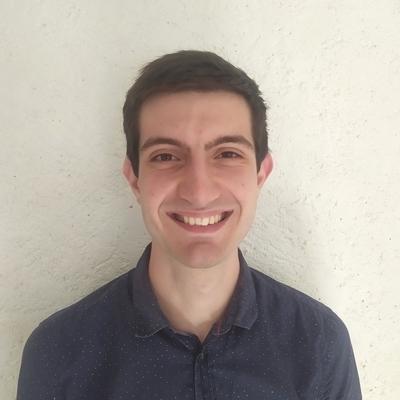
Dr. Benjamin Avakian
Biography
On 27 of November 2025, Benjamin Avakian obtained the grade of Doctor jointly from CY Cergy Paris Université (CYU) and Vrije Universiteit Brussel (VUB). His thesis is titled "Fluid circulation in crystalline-hosted shear zone - application to geothermal system for energy production"
Dr. Benjamin Avakian is now a post-doctoral researcher at the Université de Lorraine, in Nancy, France, where he continues working on fluid circulation in the Rhine Graben region.
Education
- Engineering Master degree (CMI), CY Cergy Paris Université, 2021
- MSc Geosciences for Energy, CY Cergy Paris Université, 2021
- BSc Earth sciences and Environment, CY Cergy Paris Université, 2019
Project title:
Fluid circulation in sheared zones of granite bodies – application to geothermal systems for energy production
Description
The development of new renewable and clean energy sources is needed in the context of the energy transition. Geothermal energy fulfills this role, and by exploiting the natural earth’s heat it can produce heat or electricity. Enhanced geothermal systems harness basement rocks that are used as a natural geothermal heat exchanger. A fluid naturally circulating in the reservoir is heated by the surrounding hot rocks and is then extracted to the surface to gather its calories to produce energy. After that, the fluid decreases in temperature and is reinjected in order to avoid depletion of the reservoir and surface pollution due to its high salt content. Once reinjected in the reservoir, the fluid is heated again by the hot rocks. This project focuses on the geothermal reservoir composed of granite bodies that are exploited in Alsace (eastern France) for electricity production. Soultz-Sous-Forêts geothermal plant currently produces electricity by exploiting these granites between 4000m and 5000m while at Rittershoffen geothermal site is exploited in the same granites but for heat production. However, these granites being accessible only by drilling, a precise understanding of the structures used for fluid flow pathways is difficult. Fluid pathways have to be understood to avoid induced seismicity while stimulating the reservoir. Previous studies demonstrated that seismic events mostly occur in the fresh granite, while only small ones occur in the clay-rich intervals resulting from hydrothermal alteration. By using surface analogues, a study of several kinds of faulted zones from a structural, chemical, and mineralogical point of view is led. This can determine their ability to conduct fluids and the risk that they would behave seismically if they were underground and stimulated for geothermal purposes. This project follows results from the European H2020 MEET activities which showed that progressive deformation leads to fault plane smearing by clay minerals.
Keywords
Geothermal energy, granite bodies, flow pathway, clay minerals, induced seismicity.
Superivisors
Prof. Béatrice Ledésert (CYU)
Profs. Philippe Claeys & Steven Goderis
